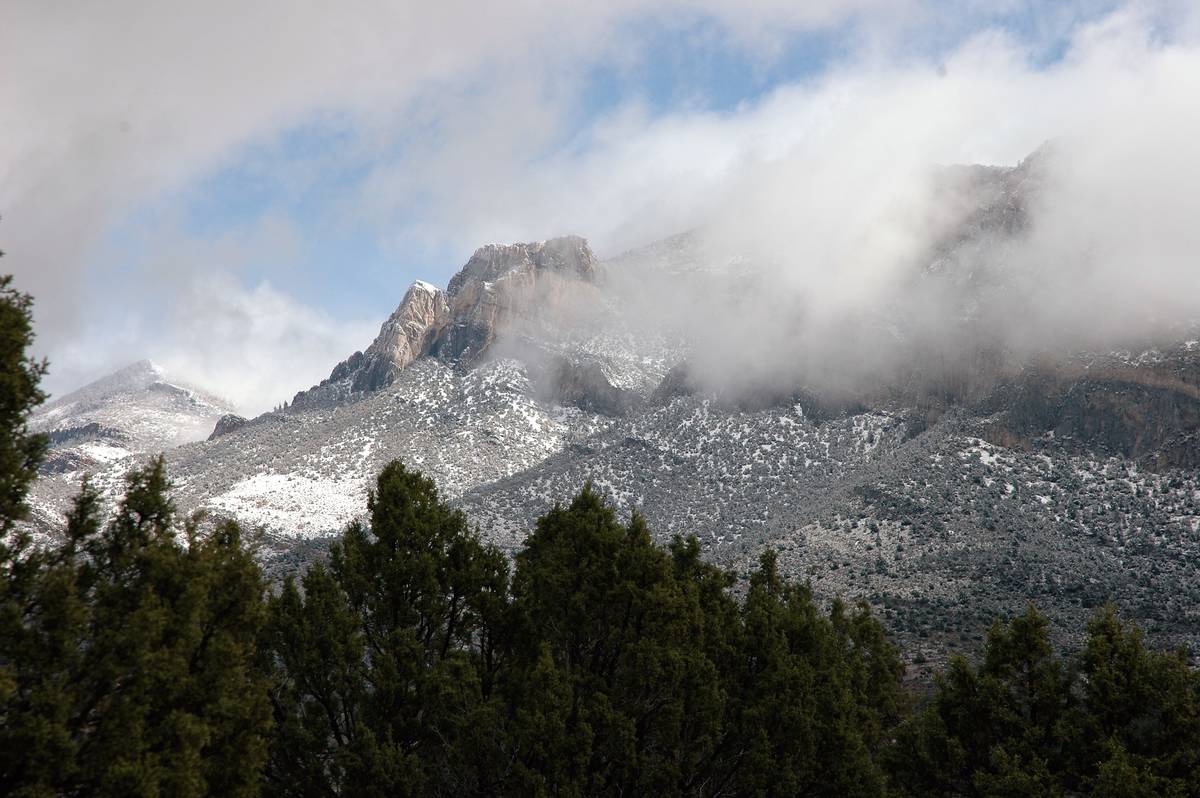Snow increases a hunter’s chances to spot mule deers

When it comes to mule deer hunting, snow is always a welcome addition to the landscape. Not deep snow that piles in drifts against the tent wall, but just enough to create a light background that makes a mule deer stand out. Without it, a mule deer standing on a hillside can be rather difficult to pick out among the browns and greys of fall foliage.
That their winter coat is mostly grey with splashes of brown does not help. It is an example of natural camouflage at its finest, and by October their transition from summer to winter coat is well underway.
Snow also brings cold temperatures that encourage deer movement throughout much of the day. The more they move the better it is for hunters looking to put some venison in the freezer.
A standing deer is much easier to see than one that is bedded down against a tree trunk or rocky outcropping, and seeing a moving deer is easier yet. Oftentimes it is their movement that gives them away. Just as a hunter’s movements often give his presence away to the prey they are pursuing.
Unfortunately, we have not had much snow and temperatures have been unseasonably warm. It’s a situation that has played out pretty much the same each October for the past several years.
When temperatures are unseasonably warm, mule deer respond by bedding early in the morning. That is primarily because they have spent the summer putting on the fat reserves they will need to survive through the approaching winter. By mid-October they are wearing the equivalent of a sleeping bag they cannot slip out of when the sun comes up. So they look for a shady spot where they can spend the warmest part of the day.
Because deer bed down early during warm spells, some hunters make the mistake of thinking there are no deer to be found. During my game warden days, I found this perception to be especially common among those who spend their hunting days driving the roads and two-tracks hoping to catch a deer on the move. While this technique has produced opportunities for hunters through the years, the chances of harvesting deer are greatly reduced when deer are bedding early.
This reality was reinforced recently when a hunter shared his frustration at not seeing deer while using his four-wheeler to cover “lots of country.” Hours in the saddle had proven unproductive for days on end. I suggested he get out of the saddle and away from the road. It is amazing what one can find hanging out just a draw or two away.
While the cold front that blew through the Silver State over the weekend brought with it a significant drop in temperatures and hope for hunters with plans to hunt over the long holiday weekend, that change is proving to be temporary.
According to the National Weather Service, the weather outlook for what is the last weekend of the 2020 deer season in most of Nevada’s designated hunt units calls for a return to warm daytime temperatures. In northeastern Nevada, “high pressure will continue to build into the area with afternoon temperatures warming to above normal levels. Warm and dry conditions will return us to the 60s-70s by week’s end.”
If you are a tag holder, that means you will want to get an early start and be on the ground when the sun comes up. You should preferably be in a vantage point that allows you to observe as much country as possible without having to move very often or very far when you do.
However, it is essential that you do not set up on a ridge top because your silhouette can easily be seen against the skyline. Instead, drop off to one side and set up with a tree, a rock, or a clump of brush at your back. Anything that breaks up your silhouette will do.
When you spot deer, pay attention to their behavior. I will tell you what they have in mind. If they are milling around and feeding comfortably in one area, they probably are not going to move far before bedding down. If you watch a buck bed down, you may have the opportunity to attempt a stalk. Or you can opt to move into position and wait for it to stand up.
One of my friends chose the latter option one year and watched a bedded buck for several hours before it presented a good shot. During that time, the deer stood up several times and moved only far enough to get out of the sun.
Freelance writer Doug Nielsen is a conservation educator for the Nevada Department of Wildlife. His “In the Outdoors” column is not affiliated with or endorsed by the NDOW. Any opinions he states in his column are his own. Find him on Facebook at @dougwritesoutdoors. He can be reached at intheoutdoorslv@gmail.com